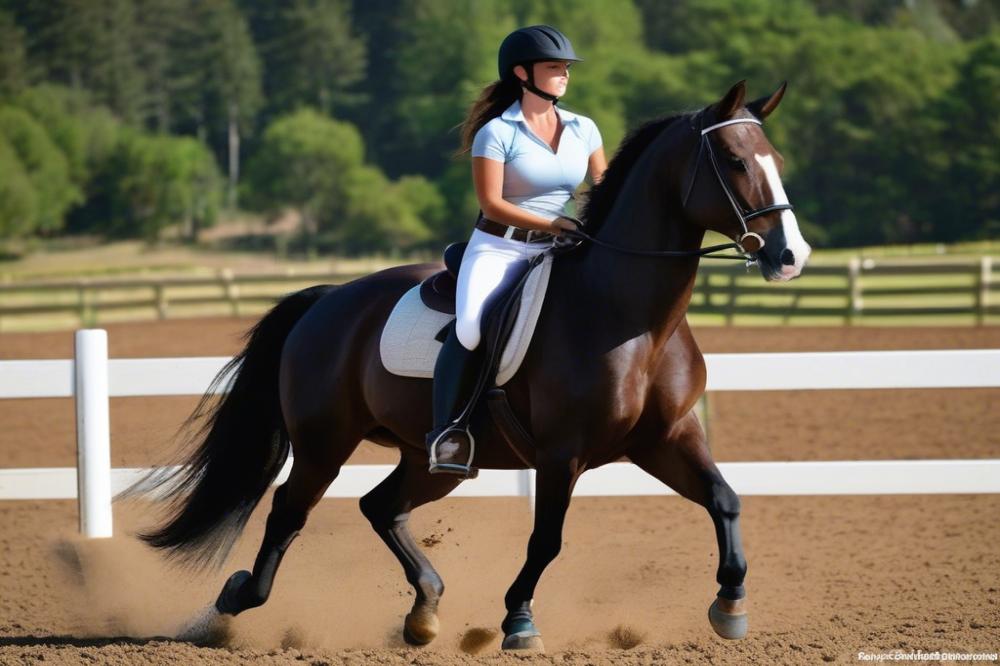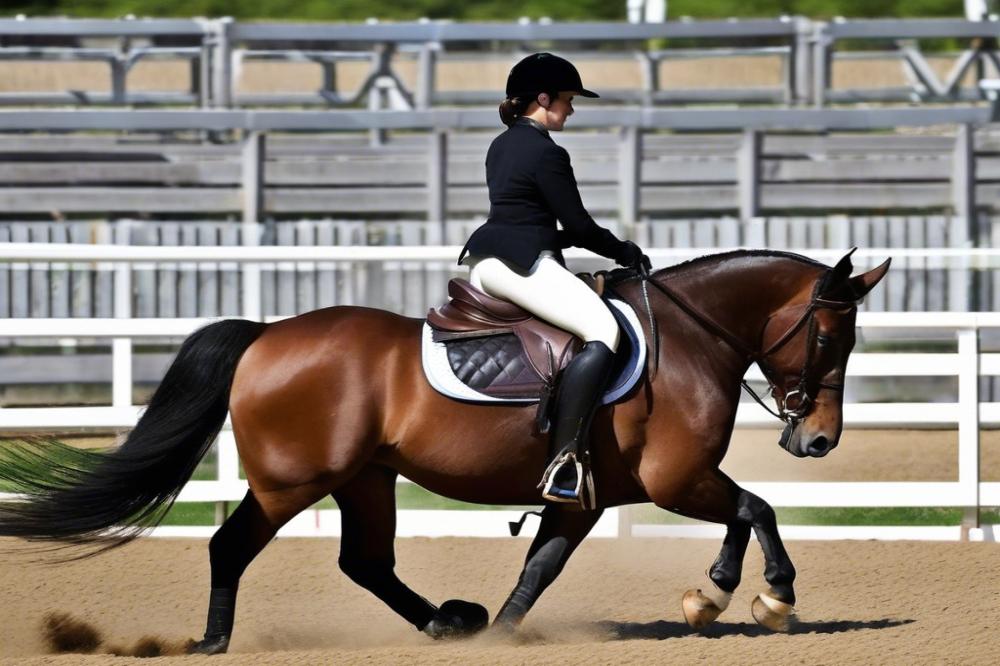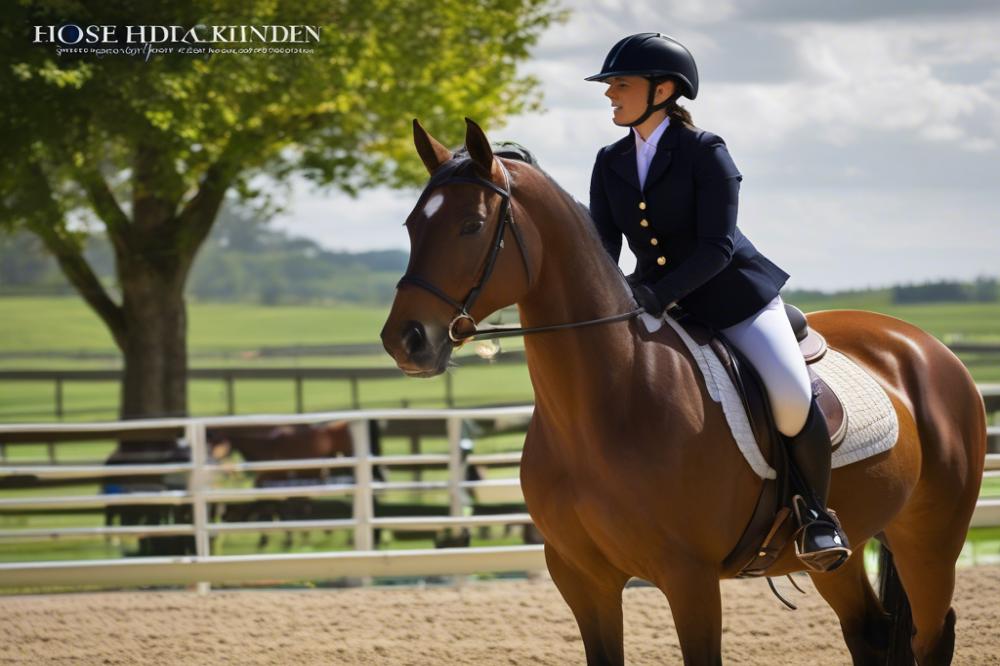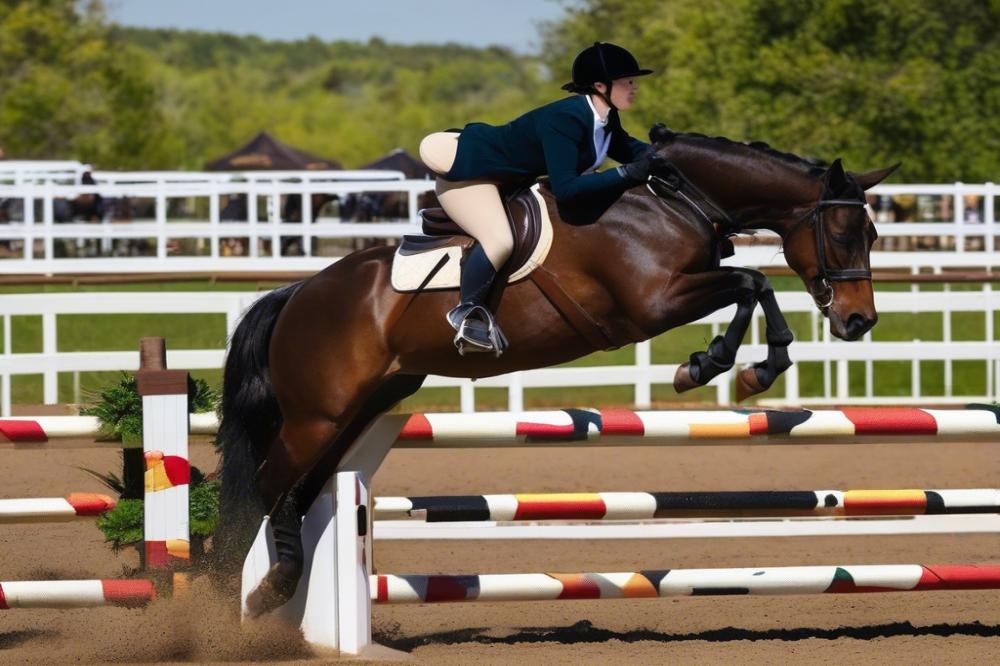Understanding Horseback Riding and Its Significance
Horseback riding is more than just a fun activity; it’s an age-old sport filled with tradition and excitement. For many, it’s a thrilling way to connect with these majestic animals and experience the great outdoors. Whether you’re galloping through fields or gently trotting along a quiet trail, horse riding provides a unique bond between rider and horse. Not to mention, the experience can be incredibly rewarding as it offers countless opportunities for personal growth and adventure.
The Value of Self-Assessment in Riding
Self-assessment is crucial when it comes to improving your riding skills. Have you ever noticed how a great chef tastes their own dish to check if it needs seasoning? The same principle applies here. Reflecting on your abilities can help you identify both strengths and weaknesses in your horse riding techniques. Asking yourself some honest questions might reveal whether you’re nailing it out there or if it’s time to focus on more equestrian improvement.
Recognizing Bad Horseback Rider Signs
There are often subtle signs that indicate a rider may not be performing at their best. If you’ve ever wondered about this, fear not! You’re not alone. We’ve all had moments where we might have felt like amateurs, especially during barrel racing levels when everything seems to speed up. Recognizing these bad horseback rider signs is the first step toward progress.
Alongside riding evaluation, understanding how you handle horse training and horse care is just as important. If your horse seems more anxious than excited, it’s a telltale sign that something might be off. Take a moment to think about how you relate with your horse. Are you truly connecting with them, or just going through the motions? Here’s a fun thought: imagine riding the biggest strongest horse breed out there. If you can’t manage that mighty beast, it may be time to brush up on some skills!
In conclusion, being aware of your riding abilities can open up new paths in your equestrian journey. With a little honesty and a willingness to learn, you can turn any weakness into strength. So, let’s saddle up and dive into the signs of being a less-than-stellar rider, shall we?
Recognizing Physical Signs of Poor Riding Skills

It’s not just about sitting on a horse. Mastering good equestrian skills requires practice and awareness. First, let’s talk about posture. When you’re riding, slouching is a surefire sign that something’s off. If you find yourself leaning too far forward or backward, you’re likely not using the correct riding techniques. A good rider maintains a straight back and keeps their shoulders back. This position not only looks better but also helps you communicate properly with your horse.
Next, observe your balance. Are you constantly wobbling or feeling like you’re about to fall off? These indicators can show that you might struggle with stability. Balance is key in horse training. If you’re bouncing around in the saddle, your horse may feel unsure too. This won’t just confuse your companions on the trail; your horse could misinterpret your signals and react unpredictably.
Then, let’s consider how your skills affect the horse. Horses are sensitive creatures. If your riding is off, it can impact their performance and behavior. An anxious horse might refuse jumps or have difficulty following commands. They often mirror their rider’s feelings. If you’re tense and unsteady, your horse could feel anxious too. Nervous energy can create a cycle that makes both of you less effective and less enjoyable when riding. Riding evaluation often involves assessing how communication breaks down between rider and horse.
Lastly, don’t forget about horse care. Handling your mount with confidence is crucial. If your horse is misbehaving, it might not just be them acting out. It could be a reaction to your poor riding skills. Horses can sense the rider’s emotional state. Help your horse succeed by improving your own techniques and focusing on strengthening that bond.
Evaluating Communication with the Horse

Good horse riding techniques start with effective communication. Clear cues and signals are essential for any rider. When you ask your horse to go forward, it should respond promptly. If there’s a lag or confusion, it could mean something is off in your communication. Horses might not understand the mixed messages from unclear commands.
Signs of misunderstanding can be subtle. Does your horse become distracted during a ride? Maybe it stops responding to your legs or rein pressure. When your horse isn’t moving as expected, it might just be puzzled about what you’re asking. Think of your horse as a dance partner. If you don’t lead well, things get clumsy.
Body language plays a huge role in horse care. Your posture, even your breathing, can affect how the horse feels. If you’re tense, they will notice. A rider who sits up straight and relaxes sends a sense of calm. Horses can pick up on emotions like a sponge, so staying chill is key. You want your horse to feel like it’s cruising along, not slogging through thick mud.
Consider how you position your hands and legs. Are you leaning too much in one direction? That can confuse your horse and lead to mistakes in direction. Equally important are your riding evaluation skills. An honest look at what you’re doing can help you improve. Think about it—if your signals are muddled, your equestrian skills can only grow so much.
Horses thrive on clarity. They are sensitive creatures, and they need their rider to be consistent. If you notice a pattern of miscommunication, it might be time to sharpen those equestrian improvement strategies. Whether that’s through taking lessons, watching tutorials, or practicing ground exercises, every bit helps. Remember, even the best riders had their awkward phases. Taking small steps toward clear communication makes a big difference in the long run.
Assessing Knowledge of Riding Techniques

So, you’ve got your boots on and your helmet fastened. But how well do you really understand horse riding techniques? Let’s dig into some common mistakes that can help you evaluate your equestrian skills.
Ever tried to steer a horse with a tight grip on the reins? Well, many riders make this classic error. It can confuse your horse and lead to a less than pleasant experience for both of you. Loosening your hold allows for better communication. That’s key! Remember, a gentle hand often leads to a smoother ride.
Lack of knowledge about horse care is another red flag. If you can’t tell the difference between a hoof pick and a curry comb, it might be time for some equestrian improvement. Understanding your horse’s needs goes beyond riding. Feeding, grooming, and even knowing their temperaments are all essential aspects of horse management.
Think about your understanding of different riding disciplines. There’s a world of difference between dressage and jumping. Each requires a unique approach and set of skills. If you find yourself saying, “I just ride,” it might be time to dive a bit deeper. Knowing the nuances of the discipline can significantly affect riding quality.
Have you ever heard of the term “riding evaluation”? That’s a fancy way of saying it might be good to check in on your own progress. Whether it’s attending clinics or asking a seasoned rider for tips, seeking feedback can shine a light on hidden areas that need work. Be open to learning. Even the best riders are always picking up new tricks!
Every horse has its quirks, much like us humans. Understanding these quirks can improve harmony during your rides. Horses communicate through their body language. If you’re unable to read the signs, you risk a bumpy ride. Emphasize the importance of relationship-building in your time with your horse.
Lastly, humor can even play a role in your skill level. If you take everything way too seriously, you may miss out on the joy of riding. Lighten up! A relaxed rider often has a more relaxed horse, which can lead to better overall experiences.
Feedback from Instructors and Peers
Seeking feedback is crucial when it comes to developing your equestrian skills. Lessons provide direct guidance on your riding techniques. An instructor’s perspective can help you see things you might miss. Constructive criticism is not just about pointing out what’s wrong; it’s a way to spot areas for improvement. If your instructor is constantly nitpicking, that could be a clear sign you might need to rethink your approach.
Peer observation plays an important role too. Sometimes, your friends noticing things can be a real eye-opener. They might catch habits that are not beneficial for you or your horse. Ever heard someone say, “You can’t see the forest for the trees”? Sometimes you get too close and can’t see the bigger picture. Observing others is an opportunity to learn what to do and what to avoid. Don’t take it too personally; everyone struggles along the way.
Watch for specific signs when it comes to instructor feedback during your riding evaluation. Consistently hearing the same points can indicate a pattern in your riding that needs fixing. If the instructor mentions your posture multiple times, that’s a pretty good hint! Feedback on how you communicate with your horse during training can also speak volumes. Understanding horse care, inclusive of the well-being of your ride, is essential. If your instructor emphasizes connection and responsiveness, take that to heart.
Remember, equestrian improvement isn’t just about physical ability; it’s a mental game too. Develop a keen ear for advice. Think of lessons as little nuggets of wisdom you carry with you. Embarking on this journey with an open mind will only make you a better rider.
Self-Reflection and Personal Feelings
Being on a horse can be a thrilling experience. However, sometimes feelings don’t match the excitement. Emotional signs of frustration can pop up unexpectedly. You might find yourself clenching your jaw while in the saddle or feeling butterflies in your stomach, not from excitement, but from anxiety. These feelings indicate something isn’t quite right.
How much enthusiasm do you feel about riding lately? Maybe it’s dwindling. A true passion for horse riding should spark joy. If thoughts of your next lesson bring about more dread than eagerness, that’s a clear sign. Lack of excitement often points to deeper issues with your equestrian skills or horse training.
Have you noticed that progress feels stuck? A riding evaluation can show you how far you’ve come, but it shouldn’t feel like running in place. When your horse riding techniques don’t seem to improve, it’s easy to feel down. Catching these moments is important. Recognizing when progress has stalled means you can address it head-on.
It’s normal to have ups and downs in riding. Even the best riders hit walls. Ride through any doubt you may have. Talking to fellow riders can help gain a fresh perspective. They might have felt the same way at one time or another. Sharing experiences can lighten the load.
When frustration bubbles up too much, think about the fun side of riding. Remember that it’s not all about perfection. Sometimes a simple trail ride can remind you why you started. Connect with your horse for a moment of joy, and breathe it in. Equestrian improvement happens not only on the arena floor but also in the heart.
Always keep a mental note of how you feel about riding. Your emotions can reveal more than you might realize. If you’re aware of your feelings, it can lead to better outcomes. Pay attention, and don’t hesitate to seek help if you notice signs that could indicate being a less-than-stellar rider. Finding the right support can help you move forward.
Impact on the Horse
Have you ever thought about how your riding affects your horse? Your performance as a rider can significantly influence the well-being of your animal. It’s like dancing together; if one partner stumbles, the other feels it, too. Understanding this connection is the first step toward improving both your skills and your horse’s happiness.
Signs of Poor Riding
Look for signs that your riding is not quite up to par. A horse that refuses to cooperate might be trying to tell you something. If your horse is constantly frustrated or nervous, it could mean your seat isn’t secure or your aids aren’t clear. Pay attention if your horse shows resistance during training. Odd behaviors, like tail swishing or biting the bit, are not just quirky; they can indicate discomfort with your techniques.
Rider Skill and Horse Behavior
There’s a deep link between your equestrian skills and your horse’s behavior. Poor tactics can lead to confusion for your horse, which can manifest as unwanted antics. When riding is inconsistent or rough, it might trigger stress in the animal. The horse isn’t just a mode of transport; it’s a partner. When your riding evaluation reveals gaps in skill, it’s essential to work on horse training techniques that promote better communication between you two.
Approach your riding with care. Think about basic horse care principles, such as ensuring your equipment fits well and that your horse is comfortable. The smallest changes in your posture or reins can feel enormous to your horse. If you’re slouching or gripping too tightly, it can lead to frustration and a lack of trust.
In the world of horseback riding, improvement is key. Equestrian improvement isn’t just about competitions; it’s about building a bond. Riding should be enjoyable, not a battle. When you invest in refining your skills, your horse will thank you with better behavior and willingness. So next time you ride, remember: you’re not just in the saddle; you’re a team. Make that partnership count!
Wrapping It Up: It’s All About Growth
When reflecting on whether you might be a less skilled rider, consider some of the signs that could suggest there’s room for improvement. For instance, if you find yourself constantly clinging to the saddle like it’s your lifeline, or if your horse seems more in charge than you are, these could be clues that you’re not quite there yet. Riding can be a bit like dancing; if your partner is always leading, you might want to ask yourself why.
Remember, there’s no shame in recognizing that you need some help. Seeking improvement doesn’t mean you’re failing; rather, it’s like asking directions when you’re lost in an unfamiliar area. A riding instructor can provide guidance and tips, equipping you with the skills to navigate through the world of horses. Imagine yourself striding confidently, both you and your horse working in perfect harmony. The right advice can transform that dream into reality.
It’s important to enjoy the journey, too. Every time you ride is an opportunity to learn something new, even if it’s just understanding what horse ears mean. Those clever critters communicate so much with their ear positions! Try to give yourself some grace during the learning process; remember that even seasoned riders had their fair share of missteps before they found their groove. If wild horses don’t need horseshoes to keep moving forward, surely we can pick up a few tips and stick with it, right?
Your time in the saddle can be filled with lessons, triumphs, and yes, some comical falls (which you’ll laugh about later). So take a deep breath, let go of that inner critic, and saddle up for the journey ahead. Keep pushing yourself, never stop learning, and before long, you might just surprise yourself with how far you’ve come. Happy riding!



